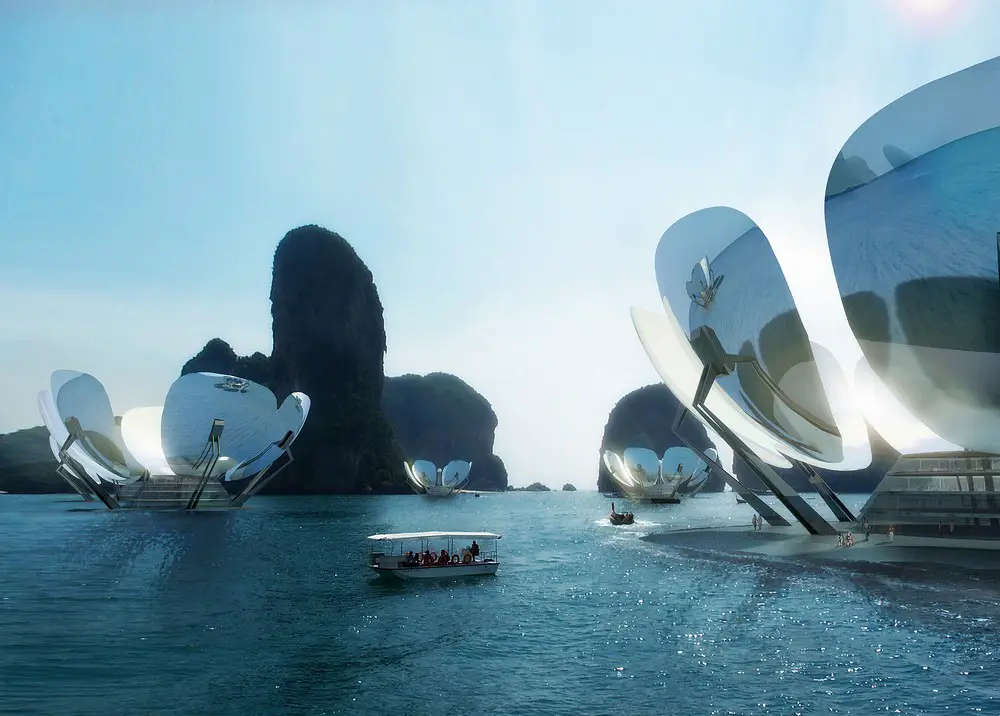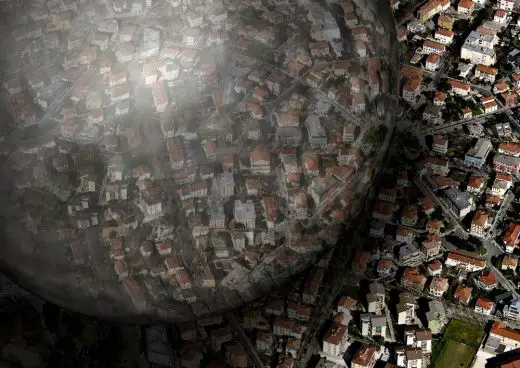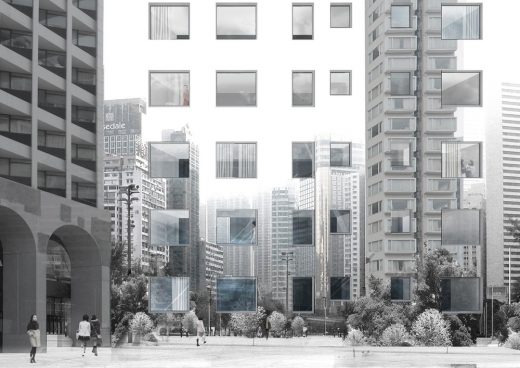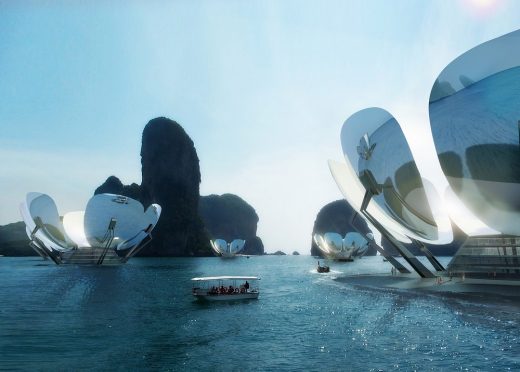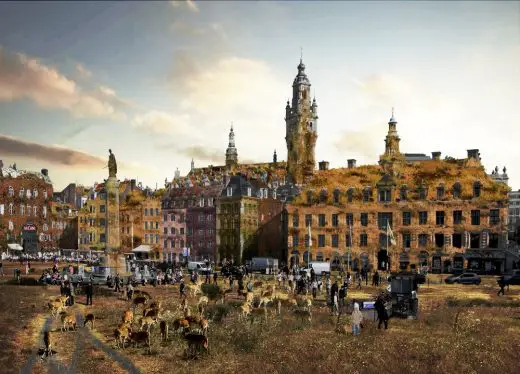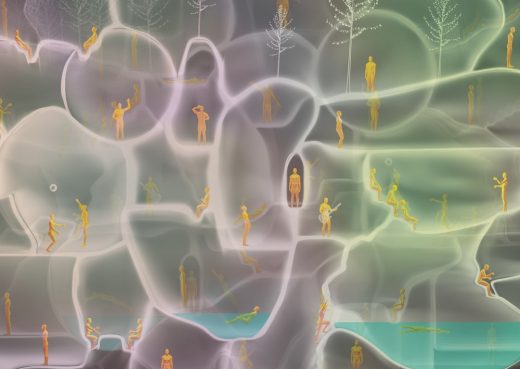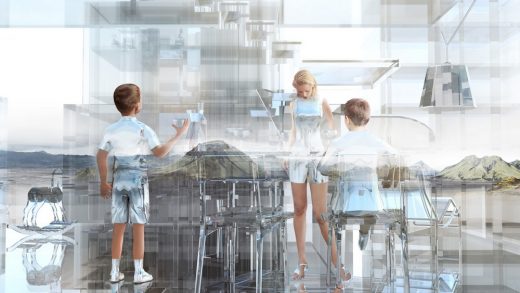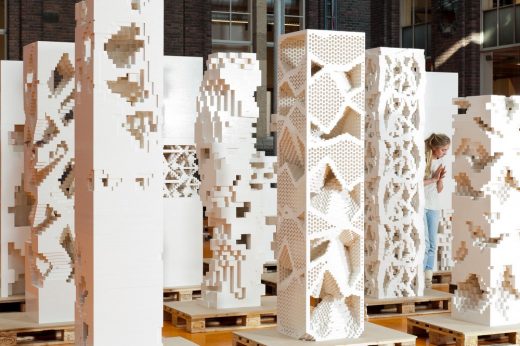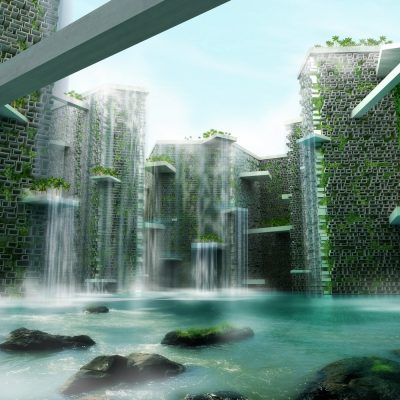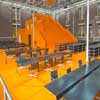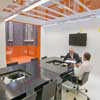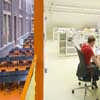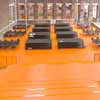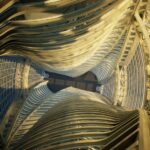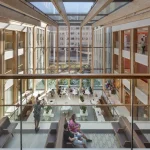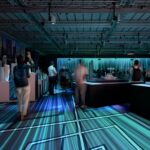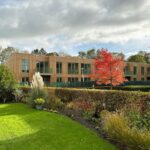The Why Factory Delft building design image, Dutch architecture project in Italy, Milan architectural news
Why Factory, Delft, Netherlands
SpazioFMG per l’Architettura exhibition, Milan design by MVRDV, Architects: Architecture Information
Dutch Think Tank
Design: MVRDV, Architects
The Why Factory Exhibition in Milan
OPENING: Wednesday 8th November – 7.30 pm – Milan, Italy
The Why Factory, Delft Building:
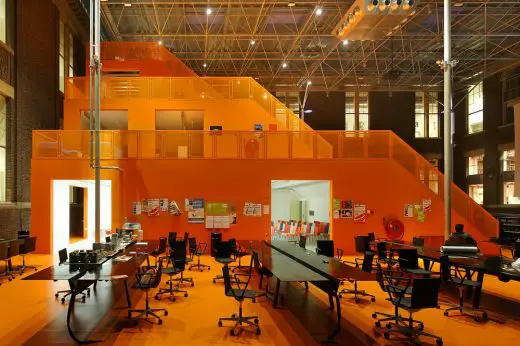
photo : Frans Parthesius
2 Nov 2017
SpazioFMG (Milan): The Why Factory
The Why Factory
Research, Education and Public Engagement
TU Delft + MVRDV
Wednesday 8th November sees the opening at SpazioFMG per l’Architettura of the fifth exhibition presented by the Milan gallery in 2017:
The Why Factory – Research, Education and Public Engagement – TU Delft + MVRDV.
Until 1st December it will display the results of the famous research workshop created in a partnership between the MVRDV architecture and urban planning studio and the Faculty of Architecture at the Delft University of Technology.
There will be an exclusive presentation of the tenth and latest book by The Why Factory “Copy Paste – The Badass Architectural Copy Guide”, introduced to the public by Winy Maas, co-founder of the MVRDV studio.
The work of The Why Factory will be presented at SpazioFMG with the support of digital and analogue materials:
the gallery will be dominated by 9 podiums, made of MaxFine Ciytstone Grey slabs by FMG, which will display the 9 books from the Future Cities series; besides them 9 digital frames will show the visitor graphics, designs and images related to the development of the research.
The exhibition will also have a large printed map showing how the results obtained by t?f, are shared and communicated to the general public through exhibitions, publications and workshops, in order to stimulate public debate on architecture and urban planning.
Egocity ; The Vertical Village
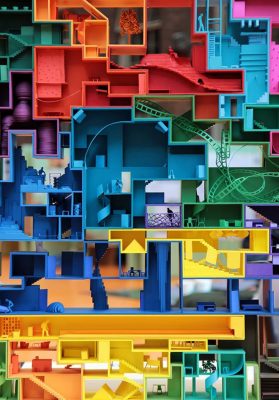
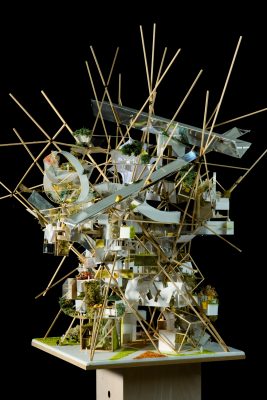
8 Oct 2009
Why Factory Delft
Design: MVRDV, Architects
The Why Factory Opens
Opening of The Why Factory : new global urban think tank and research institute
(Delft, 8 October, 2009): Ronald Plasterk Minister of Education, Culture and Science will officially open on October 15 the new think tank ‘The Why Factory’ at the Faculty of Architecture at the Delft University of Technology and the structure it occupies, an orange Tribune designed by MVRDV. The Why Factory, an initiative of Delft University’s Faculty of Architecture and MVRDV, researches urban futures and is lead by Winy Maas. During the opening event a series of prominent speakers will discuss the future city and Winy Maas will give his inaugural address as professor at TU Delft.
MVRDV the Tribune: The MVRDV designed premises of The Why Factory puts the students literally on top. The orange color defines the identity of the institute.
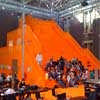
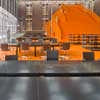
photos © TU Delft
The Why Factory (t?f)
The Why Factory is a global urban think tank and research institute, run by Faculty of Architecture, Delft University of Technology and MVRDV, led by Professor Winy Maas. It started in 2008 with the ambition to enlarge the argumentative power of the architectural and urbanistic profession.
The Why Factory’s future cities research program explores the endless possibilities for the development of our cities – at a moment that a majority of the world’s population becomes citizen. The outcome is a series of models and visualisations for the cities of the future, theories and practical solutions, proposals for existing cities, applied software design, movies and a series of publications by NAi Publishers.
Executed research projects have dealt with the challenges of green architecture and urban design (The Green Dream), food consumption and the possibilities of urban farming for Manhattan and The Hague (Food Print and City Pig), the implications of the current economic downfall for Berlin (After the Crisis), the future development of Hong Kong (Hong Kong Fantasies) and the collective responsibility versus the individual desire (the Parametric User). Current and future projects are the Green City Calculator, a software tool measuring green performance of urban centres, a research into the challenges and implications of robotics and intelligent machinery to envision a fully automated city, the challenges of leisure activity (Death of the Leisure City) and the challenges of post crisis urbanism (Austerity).
The Why Factory offers cutting edge master studios for students of architecture and urbanism with challenging topics, a Research-by-Design platform for PHD candidates. It collaborates with other international institutions and has so far organised studios and workshops at the Chinese University of Hong Kong, the Aedes Network Campus Berlin, the Tamkung University Taipei and Berlage Institute in Rotterdam.
A series of institutional partners forms a strong network with the Why Factory which collaborated with among others engineering firms Arup, ABT and DGMR, Rotterdam Climate Initiative, Dutch Green Building Council, CUHK, the Netherlands Architecture Institute, Berlage Institute, Aedes Forum Berlin, VPRO television, Thonik, Stroom The Hague, Droog Design, TU Delft and MVRDV.
The Tribune
After a fire destroyed their premises, The Why Factory and the faculty of architecture of Delft University moved into the former main building of the university. An interior courtyard was created and designated as the new residence of The Why Factory. MVRDV designed the three floor tall wooden structure, containing lecture halls, meeting rooms and the premises of the research institute. An auditorium stair climbs to the top, literally putting the students on top of their teachers.
The structure distinguishes itself by its bright orange colour which clearly identifies The Why Factory as an independent research centre within the Faculty of Architecture, Delft University of Technology. Furniture designer Richard Hutten designed flexible furniture to allow the space around the tribune to switch function between research hall, lecture hall and exhibition space.
My Future City event 15 October
Opening and inauguration of The Why Factory and the Tribune by Ronald Plasterk, Minister of Education, Culture and Science and Rector Magnificus Professor Jacob Fokkema.
After the opening invited speakers will state their dreams, definitions or predictions of the future city:
Bas Verkerk (Mayor of Delft)
Frank Bijdendijk (Director housing corporation Stadgenoot)
Ole Bouman (Director of NAi)
Kristin Feireiss (Founder Aedes Architecture Forum)
Pirjo Haikola (The Why Factory)
Bernhard Hufenbach (Head Architecture at ESA/ESTEC)
Rob Nijsse (Professor of Building Technology TU Delft and director ABT)
Coen van Oostrom (Founder and CEO of OVG)
Henk Ovink (Director Vision Design & Strategy of Ministry of Spatial Planning (VROM))
Michiel Riedijk (Prof. Architectural Design TU Delft and Founder Neutelings Riedijk)
Wytze Patijn (Dean of Faculty of Architecture TU Delft)
Nathalie de Vries (architect, director and co-founder MVRDV Rotterdam)
Wouter Vanstiphout (Crimson Architectural Historians Rotterdam)
Ronald Wall (Erasmus University, Architect and Economist)
The Why Factory project Green Dream: A visualization of the dramatic lack of progress in sustainable construction. All LEED certified buildings in the world cover only a small part of Midtown Manhattan.
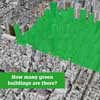
The Why Factory: Islands that use solar thermal power generation are used in a sustainable energy network and bring beauty back into the debate on Green.

The Why Factory project: The Why Factory: New Leisure landscapes by Mick van Gemert and Tanya Martinez The Death of Leisure City/ graduation lab
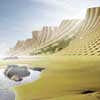
Visionary Cities
The first publication of The Why Factory will be presented on October 15th. The book with the title “Visionary Cities” sets the agenda for the city of the future. This first publication in the ‘Future Cities Series’ is intended as an overview of the issues that The Why Factory is addressing and to outline this research institute’s ambitions and modus operandi for the coming years.
In each of the book’s chapters, whether about sustainability, the boom in the leisure industry, poverty or the scarifying adoption of the future by science fiction cinema, one encounters the tension between the disciplines of architecture and urbanism and the dynamics of the city itself. Each chapter is therefore a specific brief, an urgent call for visionary scenarios for the city of the future
The Why Factory is a global urban think tank and research institute run by Delft University of Techno logy and led by Professor Winy Maas. The Why Factory started in 2008 and it wants to enlarge the argumentative power of the architectural and urbanistic profession. The Why Factory’s Future Cities research program explores the possibilities for the development of our cities, by focussing on the production of models and visualisations for the cities of the future. The Why Factory is located in MVRDV’s newly designed Tribune at the Faculty of Architecture in Delft
The results of this research programme are being presented in a series of books, the ‘Future Cities Series’, which is being published in association with NAi Publishers in Rotterdam and Thonik/Beng! graphic designers in Amsterdam, and in films produced in collaboration with Wieland & Gouwens in Rotterdam. The studies will be presented on television by public broadcasting companies and will be shown at the various exhibition venues (the Netherlands Architecture Institute, the Hong Kong Design Institute and the Aedes Gallery in Berlin).
The research team of The Why Factory led by Professor Winy Maas are (a-z): Ulf Hackauf, Pirjo Haikola, Felix Madrazo. Tihamér Salij, Daliana Suryawinata, Alexander Sverdlov and Young Wook Joung.
For more information contact info@thewhyfactory.com – www.thewhyfactory.com
TU Delft was founded in 1842 as the Royal Academy by Netherlands King Willem II. It has been known as the Delft University of Technology (TU Delft) since 1986. The Faculty of Architecture makes significant contributions to finding solutions for pressing social issues, both nationally and internationally. It contributes by: providing Bachelor’s, Master’s and PhD programmes to students who go on to become high achievers in the international context. These programmes impart the precepts of architectural design as a core competence, and structural engineering and management skills as additional competences; conducting unrivalled and innovative research in the field of design, engineering and processes; transferring this knowledge to clients, designers, suppliers and those on the actual building site, whether they be working for government agencies, institutions or businesses.
The Faculty of Architecture’s aim for 2010 is to consolidate and profit from the faculty’s superb international academic reputation as a leading school design; to become a national platform for the innovation of design, engineering and processes; to provide a central platform for discussion on current social issues relating to our fields of expertise. Combining technological aptitude, context and creativity, the faculty aims to fulfil this mission across its entire professional field.
For more information contact Anne de Haij, A.deHaij@tudelft.nl +31 15 2783333- www.bk.tudelft.nl/en/
MVRDV was set up in Rotterdam (the Netherlands) in 1993 by Winy Maas, Jacob van Rijs and Nathalie de Vries. MVRDV produces designs and studies in the fields of architecture, urbanism and landscape design. Early projects such as the headquarters for the Dutch Public Broadcaster VPRO and housing for elderly WoZoCo in Amsterdam lead to international acclaim. MVRDV develops its work in a conceptual way, the changing condition is visualised and discussed through designs, sometimes literally through the design and construction of a diagram.
The office continues to pursue its fascination and methodical research on density using a method of shaping space through complex amounts of data that accompany contemporary building and design processes. MVRDV first published a cross section of these study results in FARMAX (1998), followed by a.o. MetaCity/Datatown (1999), Costa Iberica (2000), Regionmaker (2002), 5 Minutes City (2003), KM3 (2005), which contains Pig City and more recently Spacefighter (2007) and Skycar City (2007), the latter two will be exhibited at the 2008 Biennale of Venice. MVRDV deals with global ecological issues in large scale studies like Pig City as well as in small scale solutions for flooded areas of New Orleans.
Current projects include various housing projects in the Netherlands, Spain, China, France, Austria, the United Kingdom, USA, India, Korea and other countries, a television centre in Zürich, a public library for Spijkenisse (Netherlands), a central market hall for Rotterdam, a culture plaza in Nanjing, China, large scale urban masterplans in Oslo, Norway and in Tirana, Albania, a masterplan for an eco-city in Logroño, Spain and an urban vision for the doubling in size of Almere, Netherlands.
The work of MVRDV is exhibited and published world wide and receives international awards. The 60 architects, designers and staff members conceive projects in a multi-disciplinary collaborative design process and apply highest technological and sustainable standards.
Why Factory images / information from MVRDV Architects
The Why Factory Research on Nanotechnology in Architecture
Location: Delft, Visit Netherlands
Architecture in Delft
Contemporary Delft Architecture
mecanoo architecten : Delft Architects
Building d(emountable), Nieuwelaan, Delft
Architects: cepezed
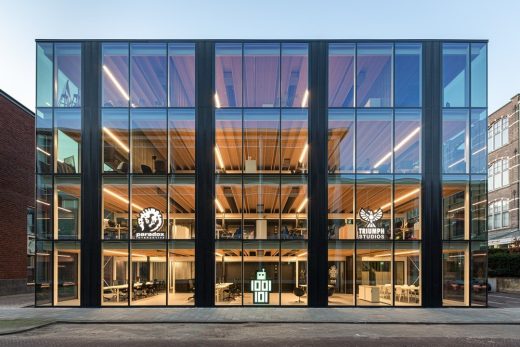
photography : Lucas van der Wee | cepezed
Architecture in The Netherlands
Contemporary Dutch Architecture
Netherlands Architecture Designs – chronological list
Amsterdam Architecture Walking Tours by e-architect
Dutch Architect – design firm listings
Comments / photos for The Why Factory – Dutch Architecture page welcome
Website: https://thewhyfactory.com/

